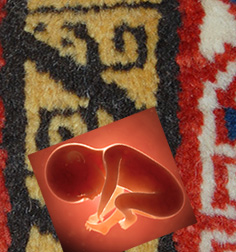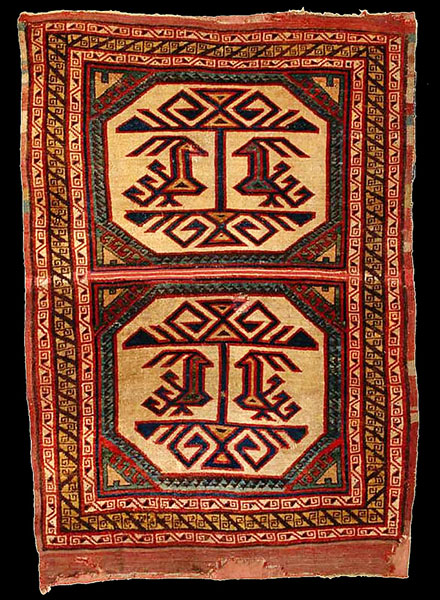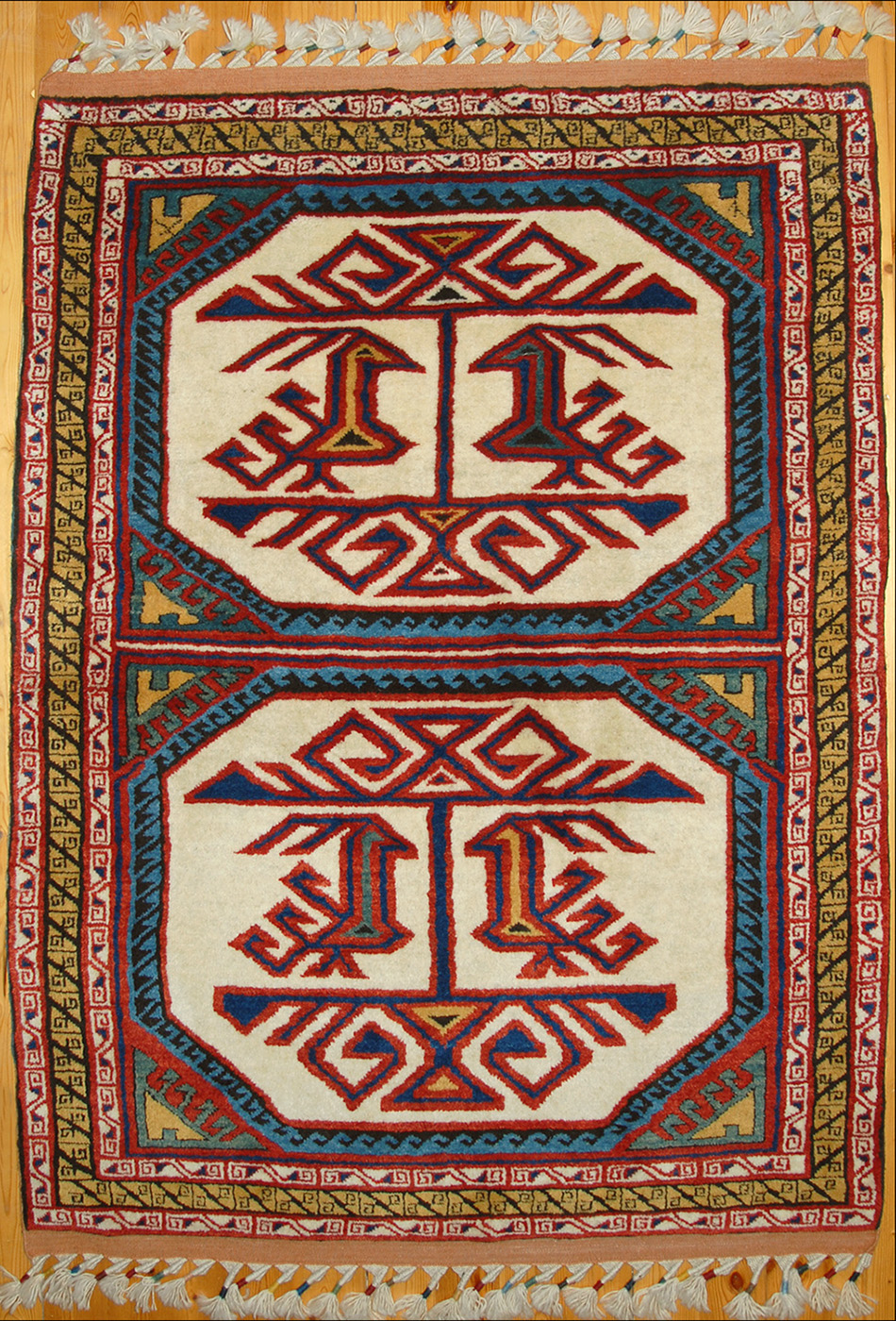
|
"Marby" rug, based on the
15th century historical Turkish rug which is kept at the Museum of
National Antiquities Stockholm, Sweden Code: MRB01 Size: 118x153cm Size (ft): 3'10"x5'0" Area: 1.8 m2 Density: 110 000 knots per square meter, totally ~200 000 knots Colors: ivory, red, dark brown, yellow, medium blue, green, navy blue. Dyes: madder, weld (Reseda Luteola), cochineal, onion skins, indigo, pomegranate skins, walnut husks, natural dark brown sheep wool, natural ivory sheep wool. Materials: Handcarded and handspun wool for pile, ivory wool warps and ivory wool wefts (two shots). 1cm of flatwoven kilim ends at both sides. - wool on wool Knots: Gördes (Turkish, symmetrical) Pile height: 0.5cm Ends: triangular plaited fringes Inscriptions: 2 tamgas (tribal seal) of Afshar tribe   Weaver: Könül Weaving Period: three months Handwoven in Azerbaijan Design: The rug carries the design of the famous "Marby" rug. This is one of the few examples surviving in Sweden from a tradition of carpet–making in the early Ottoman period in Anatolia. In 1925, the so-called 'Marby rug', was found, cut in two pieces, at the abandoned church of Marby, a village in the province of Jämtland. Belonging to the group of animal carpets, it shows red, stylised birds standing symmetrically on either side of a tree set within octagons on an ivory ground. The birds and tree motif has been long known and very common in Central Asia. To judge from their presentations in Italian paintings of the 14th century, animal carpets with a tree flanked by two birds already seem to have been popular at this time. However, they reached the peak of their production and circulation during the first half of the 15th century. The provenance of this rug from a village in Jämtland in Sweden is important as it shows that the export was not restricted to Italy, but also reached the Baltic region. Animal carpets disappeared towards the end of the AD 15th century. Apart from the Marby rug, some fragments with the motif of birds flanking a tree from Fustat in Egypt are known and there are two completely preserved examples. The first was found in a church in Italy and is now in the Museum of Islamic Art in Berlin, Germany, and a second was acquired by the Metropolitan Museum of Art in New York in 1990. A small but an interesting detail has been woven in the main border inside one of the hooked motifs. The motif is intended to symbolize "a human fetus" (the detail is created by Vügar Dadashov)  |
 The Marby rug, XV century  "Madonna and Child", by Lippo Memmi, 1340s. Staatliche Museen, Berlin   "Marriage of the Virgin", by Sano di Pietro (Italian painter, Sienese school), 1448-52. Pinacoteca Vaticana, Rome  "Jesus before Pilatus; Pilatus washes his hands", Master Schottenaltar (The Master of the Schotten Altarpiece was a German painter, active in Nuremberg during the 14th and 15th centuries). From the altar of the Vienna Schottenkirche-church, 1469-1480. Schottenstift (Monastery), Vienna, Austria. Here we can see a carpet with the same type of S motif minor border as in the Marby rug. |
Contact us for more information about this rug

.jpg)
.jpg)
.jpg)
.jpg)
.jpg)
.jpg)
.jpg)
.jpg)
.jpg)
Contact us for more information about this rug

|
For more information about the above rug or to place an order please email
vd@azerbaijanrugs.com |